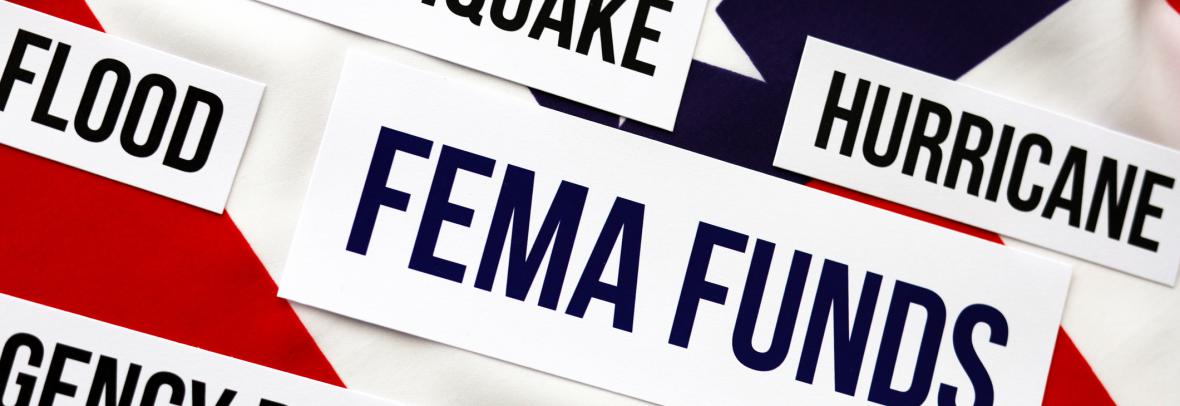
A denial is not the last word, according to FEMA. “People see that first paragraph, throw it away and think that’s the end,” says FEMA spokeswoman Renee Bafalis.
SARASOTA, Fla. – Applicants who receive a denial letter after applying for Hurricane Ian relief from the Federal Emergency Management Agency should not take that as the government’s final answer. Instead, officials say, that’s a signal to start an appeal process.
“People see that first paragraph in that letter, and they just throw it away and think that’s the end of the road,” FEMA spokeswoman Renee Bafalis said Wednesday. “But we want you to know that’s the first step in the process and we want you to appeal until you’re satisfied.”
There are a variety of reasons a first application for aid may be denied, though chief among them is that an adjuster with a property owner’s insurance company hasn’t finished providing an assessment on what the policy will cover.
“If indeed we are able to assist you, you should know that we can’t duplicate what your insurance would cover,” Bafalis added.
After that, the application may not be complete, have incorrect address information or a transposed digit in something key like a Social Security number.
Bafalis did note that while thousands of people had received initial $700 payments through the Critical Needs Assistance Program – either via check or direct-deposit – about 400 individuals had received notice that they would get paid without receiving funds, or had money initially deposited and then withdrawn.
In those cases, the holdup is missing or incorrect information, Bafalis said.
“FEMA is reaching back out to those folks to try to resolve the issue,” she added.
While FEMA urges people to call 1-800-621-3362 or take advantage of the agency’s app or the disasterassistance.gov website to register for assistance and appeal decisions, one of the best ways to find out why your application has been denied and what’s needed to make it complete is to stop by a nearby Disaster Recovery Center.
Three Disaster Recovery Centers open in region
In Sarasota County, a Disaster Recovery Center is at Shannon Staub Public Library, 4675 Career Lane, North Port, and is open from 9 a.m. to 6 p.m., seven days a week.
In Charlotte County, the Englewood Disaster Recovery Center is at the Tringali Park Recreation Center, 3660 N. Access Road, Englewood, and is open from 8 a.m. to 6 p.m., seven days a week.
A Disaster Recovery Center opened in Manatee County Wednesday at John Marble Park, 3675 53rd Ave. E., Bradenton, and is open from 8 a.m. to 7 p.m.
Go to the closest recovery center, regardless of whether it is in your home county, and bring the denial letter to submit an appeal.
“Our folks at the recovery centers will actually help you write the appeal,” Bafalis said. “They become your advocate; they want to help in whatever way they can.
“There are other aids in there besides just FEMA but when you come in and meet with our representative, they become your advocate,” she later added. “You can come back to that same person every time and they know your situation.
“We know how difficult it is, especially when you’ve lost everything and you’re in a state of disaster and you don’t know where to turn.”
The Disaster Recovery Centers also have representatives from the Small Business Administration, state agencies, nonprofits and faith-based agencies that may be able to offer assistance.
People need three things to apply for FEMA assistance: a Social Security number, the name of their insurance company or insurance agent, and proof of residence. Bafalis noted that FEMA has been working with counties and municipalities to establish proof of residence, if need be.
As of close of business Tuesday, 49,920 people in Sarasota County had registered for FEMA assistance and roughly $45.4 million has been approved through the agency’s Individual and Household Program. About $27.5 million of that has been for housing and rental assistance programs and the other nearly $18 million has gone to other needs, such as reimbursement for initial repairs, transportation needs, child care costs, storage or medical and dental assistance.
Statewide, about $1.4 billion in federal assistance is scheduled to be disbursed from FEMA, the Small Business Administration and the National Flood Insurance program. Of that, $642 million in Florida has come from the Individual and Household Program.
Again, Bafalis stressed, the initial FEMA denial letter is not the last word.
“We want you to appeal over and over and over again,” Bafalis said. “More information may become available to you, more documentation may become available.
“You may be doing repairs for your home and you have receipts for things that aren’t covered by your insurance,” she added. “Whatever it is, please use our centers.”
For more information on Hurricane Ian recovery efforts and survivor options, visit Florida Realtors Hurricane Recovery Center.
© Copyright, 2022, Sarasota Herald-Tribune, all rights reserved.
Go to Source
Author: kerrys



